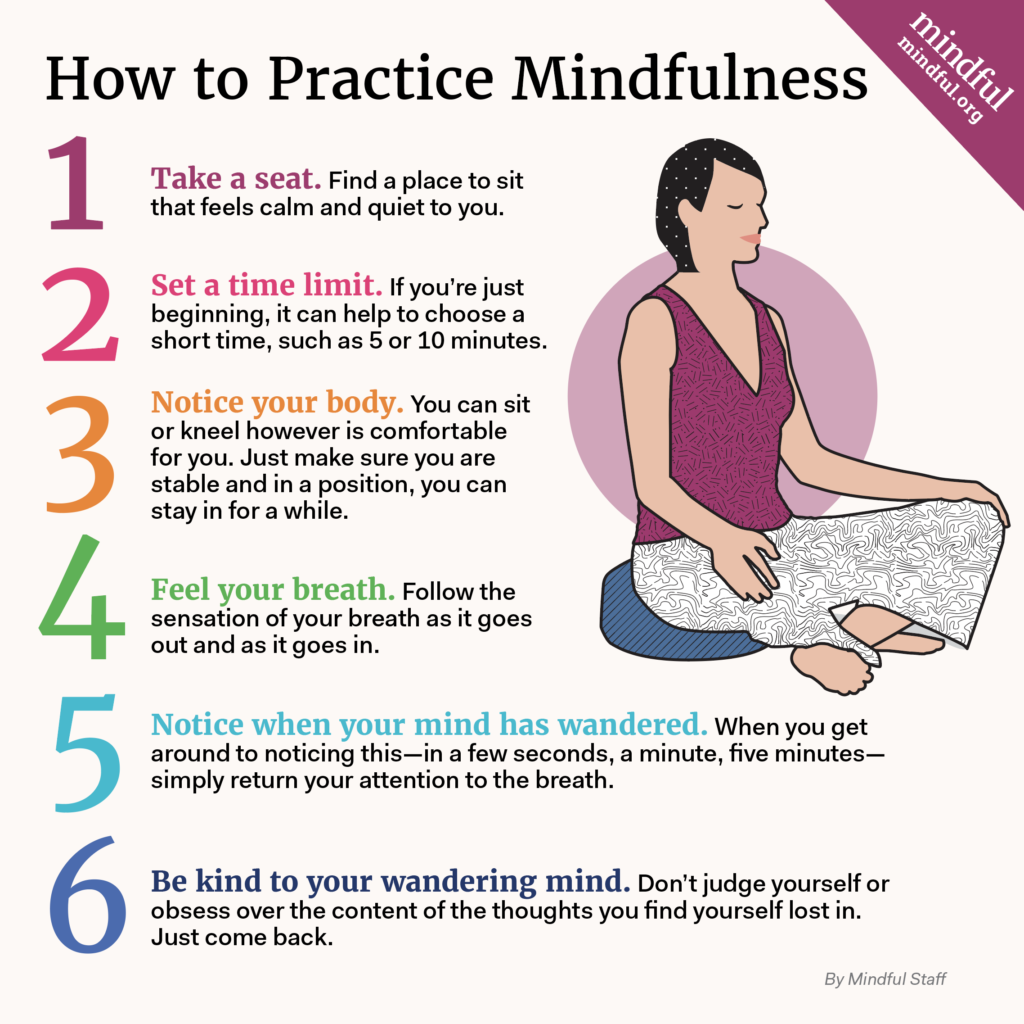Being in lockdown or in total isolation means we are spending a lot of time at home and possibly a lot of the time with our own thoughts – Quite normal thoughts of sadness, anxiety and stress.
Paying more attention to the present moment – to your own thoughts and feelings, and to the world around you – can improve our mental well-being during this lockdown. Some people call this awareness “mindfulness”.
Mindfulness can help us cope with and enjoy our lives more and understand ourselves better. It’s also easy to lose touch with the way our bodies are feeling and to end up living ‘in our heads’ – caught up in our thoughts without stopping to notice how those thoughts are driving our emotions and behavior.
This means waking up to the sights, sounds, smells and tastes of the present moment. That might be something as simple as the feel of a banister as we walk upstairs.
Another important part of mindfulness is an awareness of our thoughts and feelings as they happen moment to moment. It’s about allowing ourselves to see the present moment clearly. When we do that, it can positively change the way we see ourselves and our lives which will help us cope during these unprecedented and extraordinary times
Mindfulness also allows us to become more aware of the of thoughts and feelings that leave us feeling anxious or sad (and are not helpful). Gradually, we can train ourselves to notice when our thoughts are taking over and realise that thoughts are simply ‘mental events’ that do not have to control us.
We can ask ourselves: ‘Is trying to solve this by brooding about it really helpful? or am I just getting caught up in my thoughts?’
How to be more mindful
Reminding yourself to take notice of your thoughts, feelings, body sensations and the world around you is the first step to mindfulness. Even as we go about our daily lives, we can notice the sensations of things, the food we eat, the air moving past the body as we walk, which can give us new perspectives on life.
Keep it regular
It can be helpful to pick a regular time – eating breakfast, preparing lunch – during which you decide to be aware of the sensations created by the world around you.
Try something new
Trying new things, such as sitting in a different seat to watch TV, walking a different way to the shops also help you notice the world in a new way.
Watch your thoughts
This will need practice. “As soon as you stop what you’re doing, lots of thoughts and worries crowd in,” says Professor Williams.
“It might be useful to remember that mindfulness isn’t about making these thoughts go away, but rather about seeing them as mental events.
“Some people find that it is easier to cope with an over-busy mind if they are doing a gentle exercise.”
Name thoughts and feelings
To develop an awareness of thoughts and feelings, some people find it helpful to silently name them: “Here’s the thought that I may become ill or someone I know will”. Or, “This is anxiety”.
Different mindfulness practices
As well as practising mindfulness in daily life, it can be helpful to set aside time for a more formal mindfulness practice, such as some deep breathing.
Mindfulness meditation involves sitting silently and paying attention to thoughts, sounds, the sensations of breathing or parts of the body, bringing your attention back whenever the mind starts to wander.
Yoga and meditation can also help with developing awareness of your breathing.
Here are some simple steps to practice mindfulness. Why not give it a try?

Image shared from www.mindful.org
Mindfulness isn’t the answer to everything but it really does help our mindset if practiced enough

